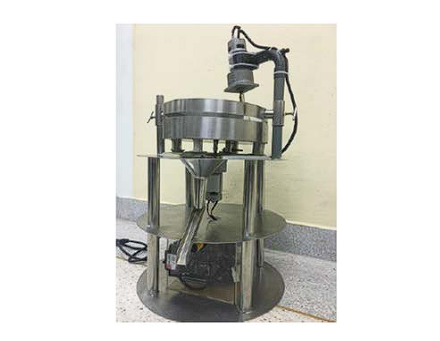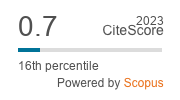Development of A Semi-Auto Tea Packer Prototype for Agricultural SME in Thailand and Indonesia
doi: 10.14456/mijet.2021.5
Keywords:
Tea packer, motor control, industrial electronics, electronic applications, SMEAbstract
This paper presents the study, design and construction of a semi-auto tea packer. The semi-auto tea packer prototype consists of 5 parts. The first part is a rotating part that will rotate when a sensor detects the tea of 2 g that falls down through the hole to the provided container. The second part is a weighting part that functions to control weight of tea to always be 2 g. The third part is a base that supports all the parts and weight of the tea packer. The fourth part is a control box that controls operation of the tea packer including: electronic circuits, sensors and power supply. The fifth part is a blender that helps to dispose the tea not to rush to fall down into the hole. The experimental results obtained from the tea packer prototype compared to one from the human showed that packing tea by a human could produce only 3-5 bag/min while using the designed tea packer could produce more with capability of 8-10 bag/min. This machine would help in enhancing SME activities with similar profile for both Thailand and Indonesia.
References
[2] Grigg, D. (2002). The worlds of tea and coffee: Patterns of consumption, GeoJournal, vol. 57, no. 4, pp. 283–294.
[3] Kakuda, T. (2018). Effects of tea galloyl catechins on the reduction of body fat, Health benefits of green tea: an evidence-based approach, pp. 116–123.
[4] Murase, T. (2013). Tea Catechins and Endurance, Tea in Health and Disease Prevention, pp. 717–726.
[5] Tokimitsu, I. (2004). Effects of tea catechins on lipid metabolism and body fat accumulation, BioFactors, vol. 22, no. 1–4, pp. 141–143.
[6] Harada, K. (2011). “Antioxidant activity of the giant jellyfish Nemopilema nomurai measured by the oxygen radical absorbance capacity and hydroxyl radical averting capacity methods, Molecular Medicine Reports, Jun. 2011.
[7] Cui, L. Li, M. Gong, Z. and Xiao, W. (2011). Optimized extraction of tea caffeine from green tea leaves using dichloromethane, Journal of Hunan Agricultural University, vol. 37, no. 5, pp. 562–566.
[8] Hayashi, N. (2013). Objective Evaluation of the Taste Intensity of Tea by Taste Sensors, Tea in Health and Disease Prevention, pp. 103–113.
[9] .Recycling for tea bags (1996), Filtration & Separation, vol. 33, no. 7, p. 524.
[10] Kosman, V. ozharitskaya, O. and Urakova, I. (2007). Comparison of ginkgolide, bilobalide and flavonoid content in tea from Ginkgo biloba leaf tea-bags with standardized dry extract drugs, Planta Medica, vol. 73, no. 09.
[11] Cleverdon, R. Elhalaby, Y. McAlpine, M. Gittings, W. and Ward, W. (2008). Total Polyphenol Content and Antioxidant Capacity of Tea Bags: Comparison of Black, Green, Red Rooibos, Chamomile and Peppermint over Different Steep Times, Beverages, vol. 4, no. 1, p. 15.
[12] Terminology used in the Tea Research. (1998. Tea Processing Technology, Chagyo Kenkyu Hokoku (Tea Research Journal), no. 86, pp. 57–93.
[13] Driem G. V., Tea Terroir and Tea Cuisine, The Primordial Origins of Tea, Jan. 2019.
[14] Baruah, P. (2017). Types of Indian Tea, Production and Marketing of Traditional and Handmade Teas of Assam, India, Journal of Tea Science Research, 2017.

Downloads
Published
How to Cite
Issue
Section
License
Copyright (c) 2020 Mahasarakham International Journal of Engineering Technology

This work is licensed under a Creative Commons Attribution-NonCommercial-NoDerivatives 4.0 International License.







